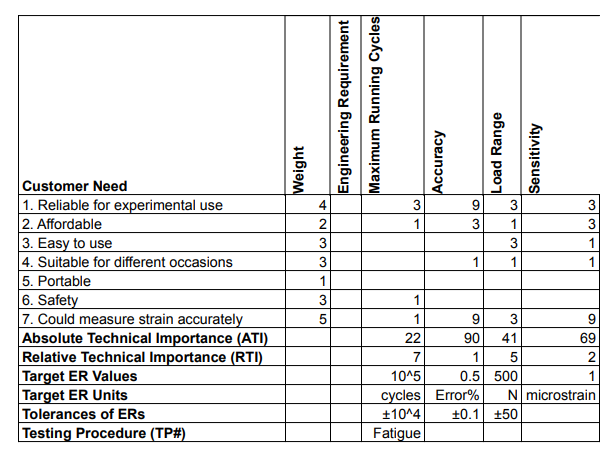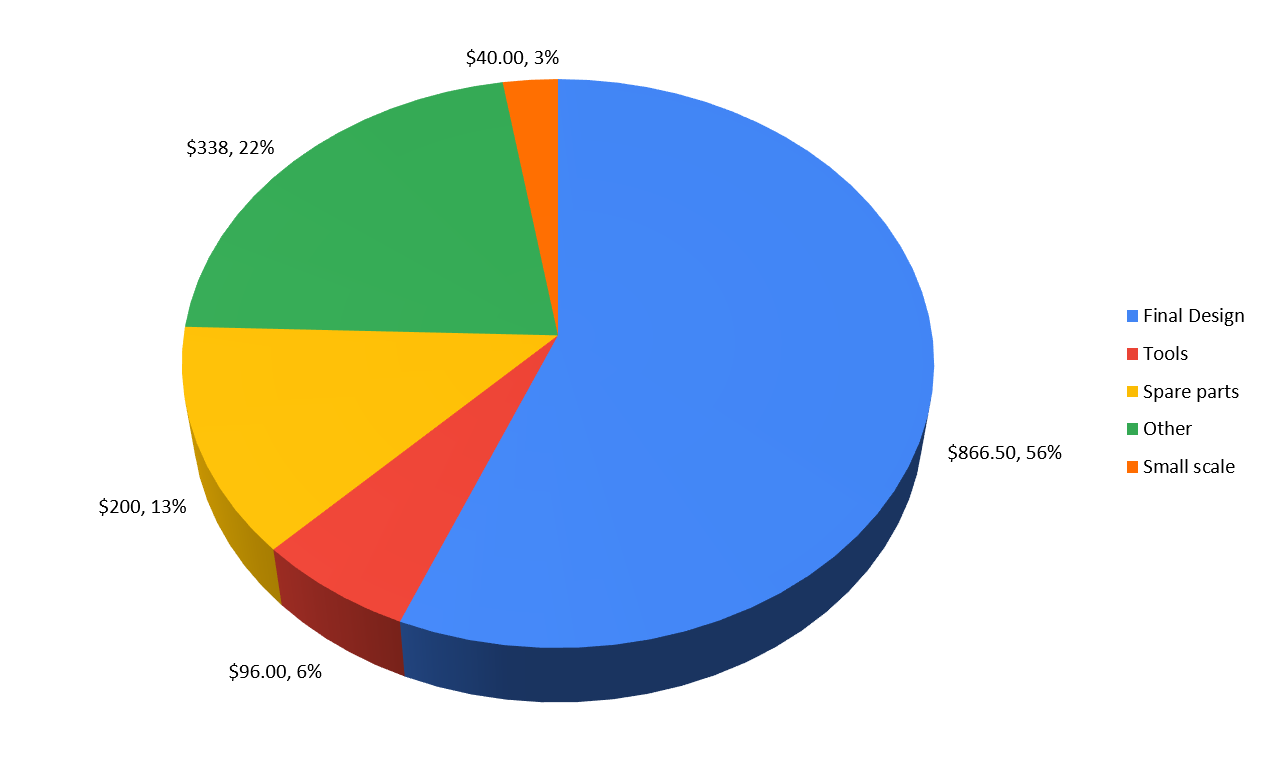Project Information
Customer Needs & Engineering Requirements
The team set 7 customer requirements and 9 ERs, through our research and conclusion by ourselves. CRs mainly include the measurement must be reliable and accurate; it should be easy to use and carry; and the device should be inexpensive and should be safe enough. Among them, accurate measurement is the most important CR, followed by the reliability and safety of the device, and finally, if it is cheap and easy to carry, it will be great.

Decision Matrix
The team created the QFD chart to map customer requirements to engineering requirements by evaluating and scoring. You can see the details of the scoring in this slide. And after the calculation, accuracy gets the highest ATI Points which means it is the most important ER. We hope the accuracy of the equipment can reach an error of less than 0.5%. The second is sensitivity, we hope it should be within 1 microstrain. The ATI scores obtained by the cost and material choice are almost the same. Our team hopes that the cost can be controlled around US$1,200; the best choice of material is aluminum. Overall, what we get from the QFD chart meets our expectations.
Budget
For the tool part, our cost is around $100. It includes screws and screwdrivers to fix the base, as well as solder and super glue to fix the strain gauges. In the load cell of about $400. The purchase of strain gauges and the base accounted for the majority. Considering that some metal blocks need to be customized, the future price of the load cell may be higher, but it should still be within the estimated budget.So our final design should be within $900. And we have reserved 200 US dollars as spare parts and replacement parts, which is very abundant.

Budget Distribution
